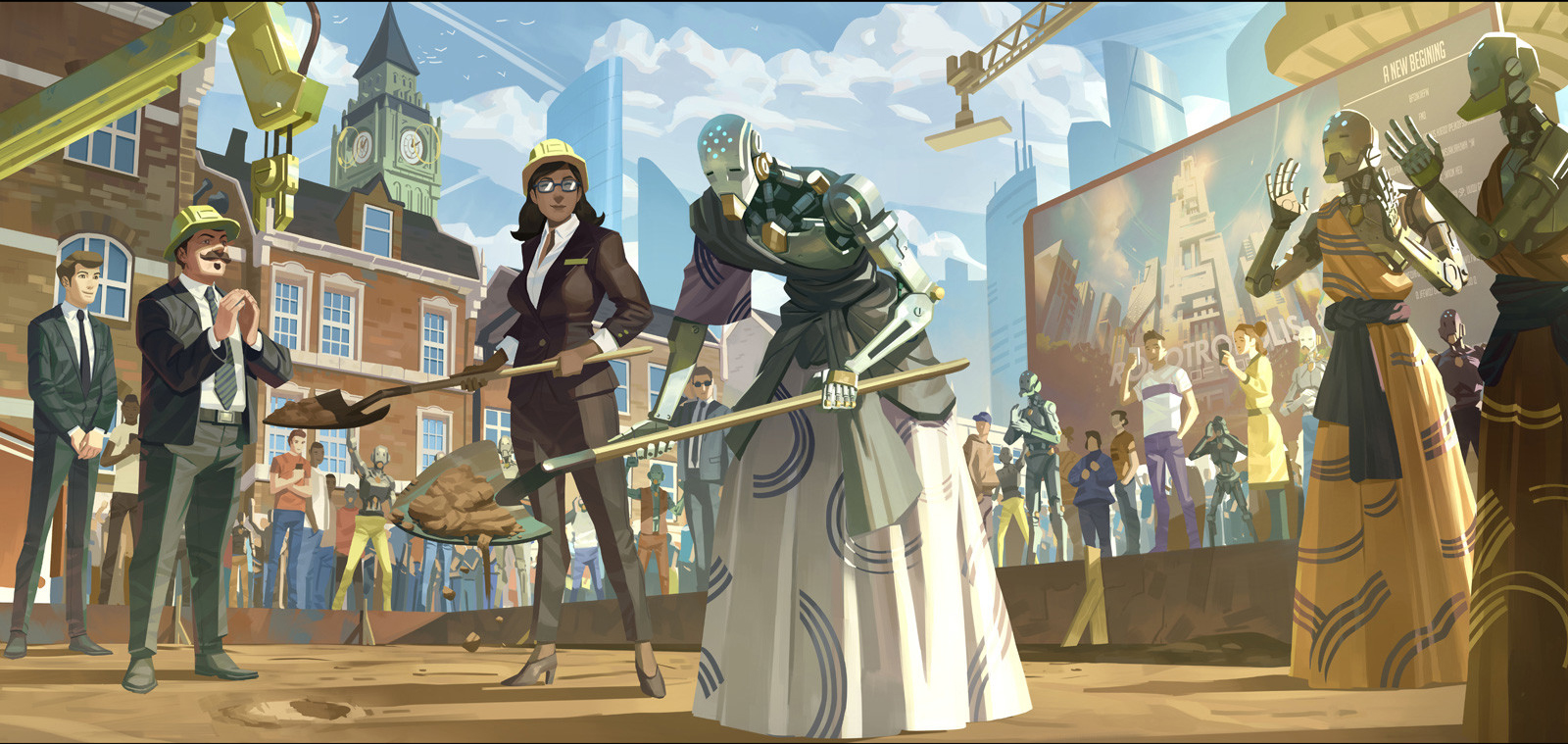"Some may argue that the issues presented in the works of these directors loses some of its relevancy due to the use and portrayal of much more advanced technology than we currently have in the narrative. As a counter argument to that, aside from the fact that as mentioned before, precursor forms of tech had already been available for the public, the specific elements and issues about technology’s relationship with old age and love discussed in each movie have already appeared, some to an extensive level of similarity. Many of which, comes from the real life “land of robots” - Japan
In the case of Paro, the robotic seal was designed by Takanori Shibata in 1993 and manufactured by Japan’s AIST, with the aim to provide therapeutic benefits and improvement in quality of life for the large population of elders, particularly those whose suffered from dementia. It’s creation based on the mould of Furby and various documented therapeutic benefits of animal engagement for the elderly, which was then further improve upon by the seal thanks to its improved availability and fewer care requirements due to its “robotic” nature as opposed to a real life animal who can be unpredictable, transmits diseases and would have to go home at the end of the day (Johnston, 2015). Moreover, Paro can display an extensive level of emotion and interaction that helps constitute its image as a living creature. These are done through a wide array of sensors that helps the seal to hear, recognised and interact with its user in a realistic reactionary form, such as recognising when its name is called, purring when it fur is stroke or annoyed at its whiskers being touched. This, coupled with its traditionally cute design with large black eyes, long lashes and soft furs, played a crucial part to its role as a therapy agent creating a character that its user can recognise and form a genuine emotional bond with (Kerruish, 2016), (Battery, 2016).
In that sense, Paro was very successful, with very various benefits documented to therapy process and daily life of the elders it interacts with, including a reduction of loneliness and the need for medication, a platform for the elder to direct their emotional output and a heightened interaction rate and lifted moods when the robot is present (Battery, 2016), (Sharkey, Wood, 2014), (Johnston, 2015). However, the use of Paro also garnered criticism, mainly focusing on its ethical implications. One area of criticism was that the encouragement to interact with Paro who only artificial reacts like a pet toy akin to the deception and infantilization of elders, especially those who suffered from dementia, and can be observed as demeaning and patronising (Sharkey, Wood, 2014). Linking the real world to the fantasy one, it is certainly a feeling that we observed in Frank when he was first introduced to his Robot. A argument by supporters to this point was that the majority of Paro’s users are aware of the fact that the seal is not a living animal but they choose to..."
"It is not surprising to
see that both of these case examples are the products Japan, a country that has
been leading the field of robotics since the 70s (. This processed are then
further propelled at the end of the millennium to address the country’s rapidly
aging population and labour shortage. As a result, robots become ever more
integrated into the Japanese economic and social models, from factories and
hospitals, to shop fronts and pop-culture (Sone, 2016) (Hornyak, 2006). The
process also owns its success on no small parts to the Japanese’s relatively
accepting and optimistic attitude about their artificial friends compared to
the West, a sentiment that echoed from the line workers of factories to the
very top of government:
“In 2020, I would like to gather all of
the world's robots and aim to hold an Olympics where they compete in technical
skills…We would like to set up a council on making a robotic revolution a
reality in order to aid Japan's growth.”
(Abe, 2014)
However, the environment that has
allowed for this rapid robotics development and application, is also one that
is festering with an increasing numbers of societal and human issues. Apart
from the crisis of an aging population, ever since Japan’s “bubble economy”
broke in 1989, the country has suffered from seemingly never-ending stagnated
economy. This affected wages, employment, prices, but more importantly, it
deeply damaged the Japanese’s confidence and global image that they had during
the high of the 80s- the world leader of technology and manufacturing, a successful
model for a fully developed nation both economically and socially, that manage
to retains its cultural identity. This is turns translates to all levels of its
citizen, especially the younger generation, who are becoming more pessimistic
and isolated, reflected in the gradual increase of “hikikomori” (people how
shuts themselves from the world) and NEETs (Not in education, employment or
training), a rapid declining birth rate attributed to a female population that
doesn’t want to raise a child in this sort of environment or considered it a
waste of efforts and energy, and the one of highest rates of suicide rate among
developed nations, fuelled by rampant alcoholism, depression and a notorious
culture of overworking. (Zielenziger,2009) ( Wakatsuki, Griffiths, 2018). The
robots more or less are a product of these issues, a mean created to address it
and in turn, whether purposely or not achieve success by it.
While
not applicable to every nations or cultures, the robot obsession of Japan
presents a thought –provoking, and melancholic perspective on how an
environment that festers with such societal and human issues would be the same
one that has allowed for such rapid developments and application of robots. The
irony of this idea also carries in the word of"






















